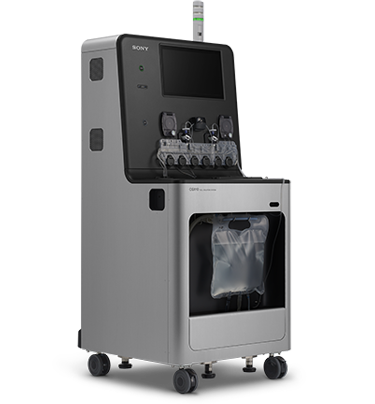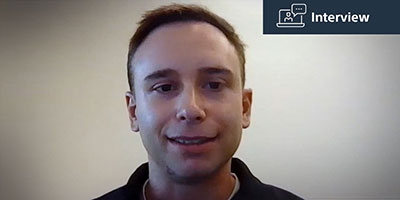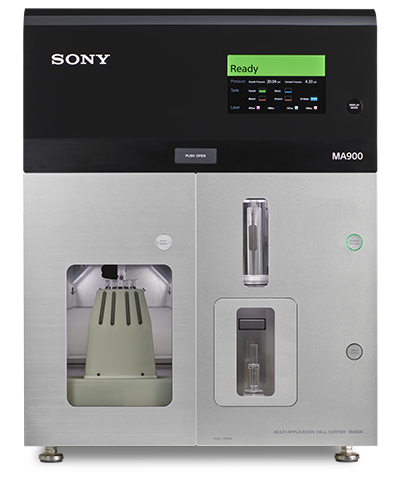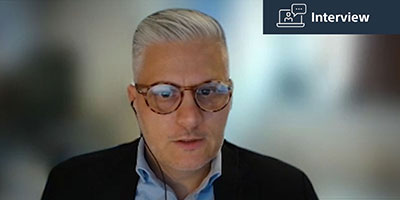

Leading research centers around the world are using our flow cytometry platforms to drive solutions in translational science. Here, we take a look inside the laboratories engaged in cutting-edge innovation across immunology, oncology, and regenerative medicine.

The CGX10 is a fully closed, automated cell isolation system designed for GMP-compliant cell therapy workflows. By enabling precise, multi parametric sorting of clinically relevant cells – such as stem cells, Treg or CAR-T cells – the system minimizes contamination risk and supports scalable, consistent production of advanced therapies.
Researchers at Stanford’s Laboratory for Cell and Gene Medicine are using the CGX10 to modernize and scale clinical manufacturing of cell therapies. The team relies on the system’s automation and precision to reduce manual handling, streamline compliance, and accelerate production – ensuring sterility, precision and greater scalability for broader global access.
Renowned stem cell pioneer Dr. Irving Weissman recently shared compelling results from his team’s work at Stanford University using flow cytometry-based sorting platforms at the International Society for Cell & Gene Therapy Conference 2025 Annual Meeting (ISCT 2025). His session highlighted the use of flow cytometry-sorted, purified hematopoietic stem cells (HSCs) to develop novel treatments for metastatic breast cancer – a powerful example of how automated, high precision cell isolation is advancing clinical impact. Read the full article on Dr. Weissman’s presentation or watch the video interview with Alex Anneling to discover how the CGX10 system is supporting advanced therapy development at Stanford’s Laboratory for Cell and Gene medicine.

“The CGX10 has significantly refined our cell isolation process. Its precision targeting, closed-system automation, and intuitive software have transformed how we manufacture clinical-grade therapies.”
- Alex Anneling, Stanford University

The MA900 is compact and versatile, supporting up to 14 parameters and 4-way sorting. Its microfluidics chip-based sorting capability and intuitive software deliver high purity results with minimal hands-on time – ideal for busy core labs and translational researchers.
The Translational Research Center in Gastrointestinal Disorders (TARGID) at KU Leuven is a leading institute exploring the mechanisms behind gastrointestinal diseases. Within TARGID, Professor Gianluca Matteoli’s Laboratory for Mucosal Immunology focuses on how the gut’s immune responses, with the goal to uncover the causes of conditions like IBD and Crohn’s disease, is paving the way for early diagnostics and new treatments.
Read the full article or watch the video interview with Prof. Matteolli to learn how the MA900 is helping researchers at KU Leuven uncover new immune pathways in gastrointestinal disease.

“Being able to identify and characterize cells is essential for our work, so we use flow cytometry and cell sorting. We need to be able to sort the different cell subsets and put them in culture, which allows us to perform the experiments that validate our hypotheses using patient-derived cells ”.
- Gianluca Matteoli, DVM, PhD, TARGID, KU Leuven

Designed for high parameter immune profiling, the ID7000 features up to 186 detectors and automated spectral unmixing. It supports large panels and delivers clear, low noise data – even from limited or complex samples.
The instrument is advancing research into complex digestive conditions at KU Leuven’s Intestinal Neuroimmune Interactions lab. With the capacity to analyze over 40 markers and unmix challenging macrophage autofluorescence, the system enables detailed immune profiling from limited biopsy material.
The team is using this technology to uncover hidden immune dysregulation in patients whose gut tissue appears normal under conventional analysis, revealing new pathways involved in IBS and paving the way for more targeted therapeutic strategies.
Read the full article or watch the video interview to see how the ID7000 is enabling novel discoveries in gut-brain axis research.

“With over 44 colors and clearer, more comprehensive data, the ID7000 enables us to uncover immune dysfunctions in IBS patients that would otherwise remain hidden.”
- Dr. Hind Hussein, KU Leuven
Looking to learn more about our innovative cell sorting platforms? Our website has many helpful resources exploring the various features and functions of these systems. From on-demand webinars to detailed application notes, you’ll find a range of materials designed to support both new and experienced users.
Sony Group Corporation has been named one of the CDP’s prestigious A List for climate change performance for the fourth consecutive year, and ninth time overall. This recognition highlights our progress in reducing our environmental impact through the global Road to Zero initiative, which targets net-zero emissions across Scopes 1–3 by 2040 and 100% renewable electricity at all sites by 2030. From expanding solar energy to collaborating with suppliers on sustainability, we’re proud to support disease research not only through innovative technologies, but also through responsible practices that help to protect the planet.
